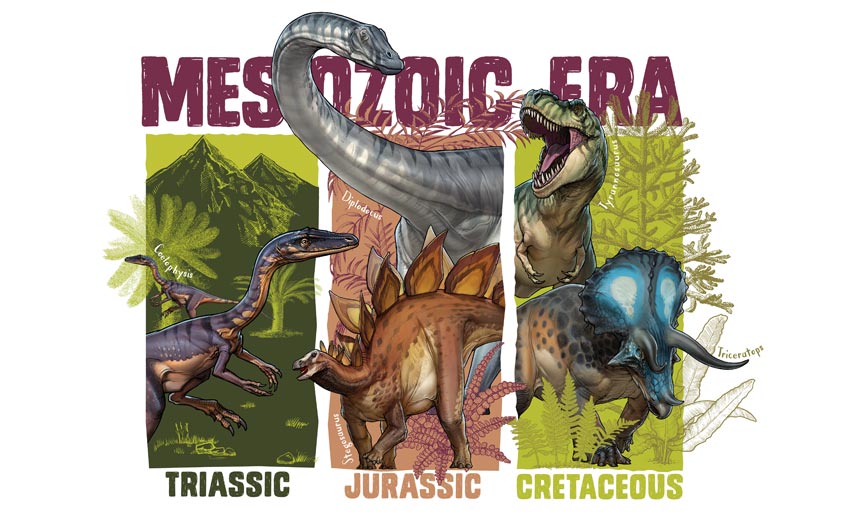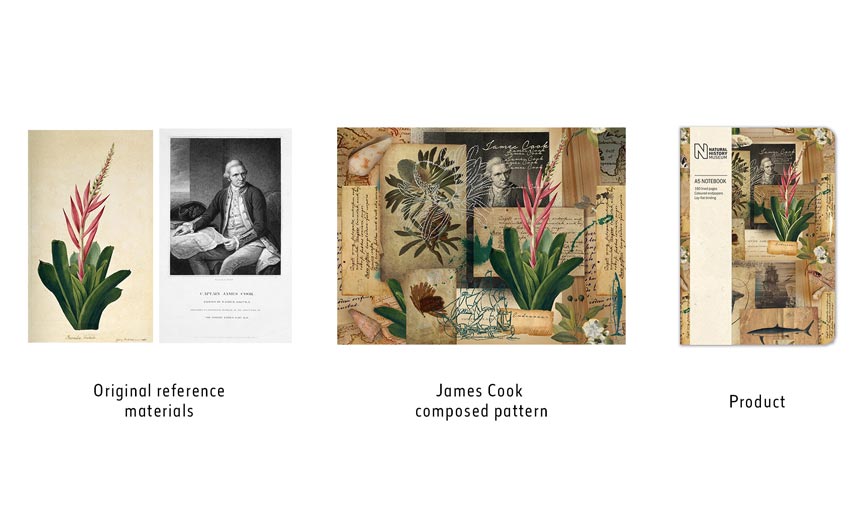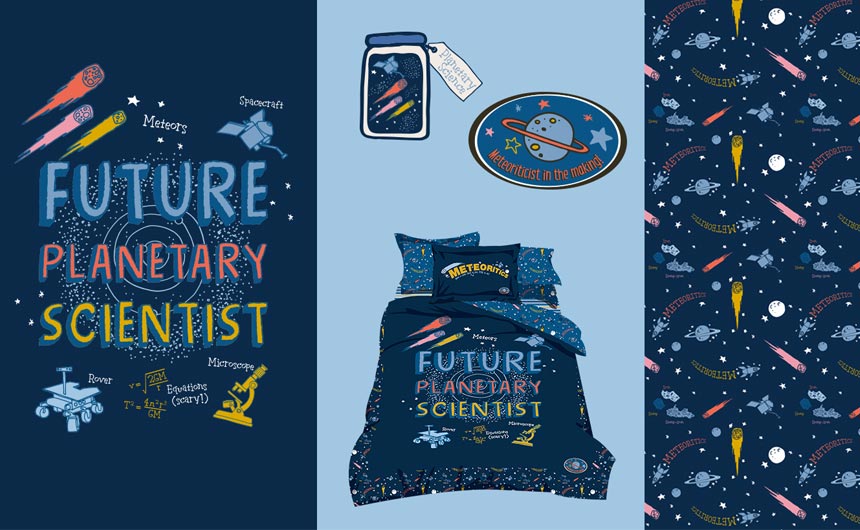Maxine Lister tells us how the Natural History Museum is conquering licensing.
In terms of associations and resources, this is a brand with an embarrassment of riches: fossil specimens, big and small mammals, dinosaurs, art, maps, the building itself… How much work went into channelling all of this into a clear licensing proposition?
Maxine Lister, senior licensing manager: To be honest, it took some time. I had to first get a clear understanding of what we had in the collection and then start to compile those assets with the strongest commercial potential so that licensees could understand the collection and how best to use it. Having so many specimens within the collection can be daunting for a licensee and we want to ensure that the product development process is as easy and creative as it can be.
Our licensing image bank continues to grow monthly as we are lucky enough to have three full time photographers at the Museum, so imagery is being captured on a daily basis and where commercially relevant we can access these.
Secondly, I took the decision to develop style guides to provide ready-made, flexible graphics for our licensees that also tie in to upcoming trends to ensure we can be relevant to the retail market. We will continue to develop style guides moving forwards and are already planning the guides that will be launched 2019.

Not many people know that the Natural History Museum has a large art collection. Could you tell us more about this? How does this feed into your licensing campaign?
The Museum’s Library looks after our world renowned collection of natural history literature, artwork and manuscripts. The collection contains more than one million items including 350,000 artworks.
Our special collections include some of the Museum’s most treasured items and are particularly rich in material from the eighteenth and nineteenth centuries, including works from artists who made a significant contribution to our understanding of the natural world. We can draw from this vault and make use of artefacts, for example, we developed a detailed pattern using extracts and artworks from James Cook’s first voyage onboard the endeavour which features on a luxury notebook.

Is awareness of the Natural History Museum as a brand growing? Did BLE help you to introduce new potential partners to the brand?
We had a very successful Brand Licensing Europe last year with new contracts already in negotiation and close to being signed. We also had some great retail conversations, which we are hoping will develop into interesting product ranges over the course of the next couple of years. Our collaborations with both Oasis and FatFace have helped to increase our brand awareness significantly and have also resulted in retailers approaching us to discuss new opportunities.
Your kids’ offering has strong potential in the very different areas of science-related toys and games and apparel. At the same time, an educational element is part of both. Why is this? How is it incorporated into apparel?
As a scientific institution it is important that education forms a part of our children’s licensing programme. We have a large science department at the Museum that specialises in many areas of natural sciences, such as palaeontology, entomology and meteoritics. We therefore like to ensure that factual information forms a part of a children’s product, in a fun and engaging way; this can be within the graphic itself or on packaging such as a swing tag.
We have developed a range of science kits with Great Gizmos, which have a more overtly educational tone to them. I feel there is more potential within this area and we are actively looking for new partners with interesting ideas.
Our new ‘Future Scientist’ style guide showcases the work of our amazing scientists, showing how fun a career in science can be, inspiring children to take an interest in science from a young age.

Could you give us a brief recap of recent licensing activity?
Most recently, our winter collection with FatFace has landed in stores, featuring a mix of apparel from tees and hoodies to pyjama sets with graphics based on dinosaurs and meteorites. We are busy developing the spring and summer collections for next year, which are looking just as exciting.
Other recent launches include a range of calendars with Portico Designs, themed to our collections such as our botanical illustrations, as well as another range based on imagery from the Wildlife Photographer of the Year competition, which is owned by the Museum.
We are busy developing new greeting card and partyware ranges with Gemma International, new crafting accessories with DoCrafts and are currently building on our existing product range with Museums & Galleries, with new products launching in spring 2019. We have some very exciting projects underway with product development in motion for ranges launching from now up until 2020.
You’ve had some high-profile successes in adult apparel – notably Oasis womenswear. Is apparel – and especially fashion brands – an area of adult licensing you intend to pursue?
We were incredibly happy with the Oasis launch and enjoyed working with their creative team on the development and launch of the collection, which included a PR dinner at the Museum and branded store windows across the country. The ‘Wild and Wonderful’ collection proved to be a fantastic demonstration of how to adapt historical artworks into a contemporary and trend relevant fashion line. We are currently in discussion with other fashion brands and I am very keen to develop this area of our licensing strategy. The wealth of assets we have available gives us plenty of scope to develop some beautiful ranges for both men and women.
What so-far untried areas look promising?
We are currently in talks with a confectionery partner and hope to announce this early in 2019. With regards to our adult programme, we are focused on developing homewares and gifting as we see huge potential with these categories and are already progressing with some very exciting projects in this area.
For our children’s programme, we would love to develop back to school and toy categories, particularly given the scientific nature of our brand. The digital space also has huge potential for us and we are keen to explore this further over the coming months. We are busy exploring relationships for halo projects with the help of our brand collaborations partner, Glue Creative Thinking, who are actively pursuing partnership opportunities in various categories including apparel, stationery and gifting.
What would you most like to achieve in the licensing business – both short and long-term?
Our mission is to develop a strong, global licensing programme for both adult and children that highlights the essential work being conducted behind the scenes at the Museum and allows consumers everywhere to interact with our brand beyond the walls of the Museum itself.
We intend to explore opportunities in new territories with an initial focus on Asia and we also strive to continue strengthening retail partnerships within the UK market to develop an evergreen brand that is widely recognised by demographics young and old.
Do you pursue a sustainability policy?
We encourage our licensees to think carefully about packaging when developing product to minimise its use and where possible give the packaging a secondary function, for example by becoming part of the play pattern on a toy product to reduce any waste and actively encourage recycling.
The Museum itself has recently stopped selling water in plastic bottles to discourage the use of single-use plastics, and much like this, we also try to minimise waste and encourage recycling within our licensed product ranges. We have recently developed bamboo mugs with Museums & Galleries that launch in spring 2019 and we are in promising talks with multiple partners to develop sustainable product ranges that give strong consideration to and respect the environment.






























